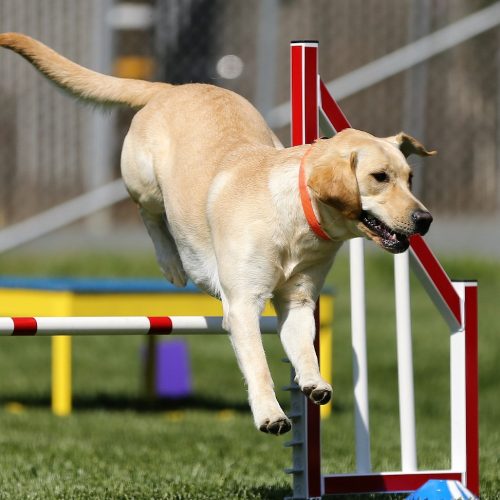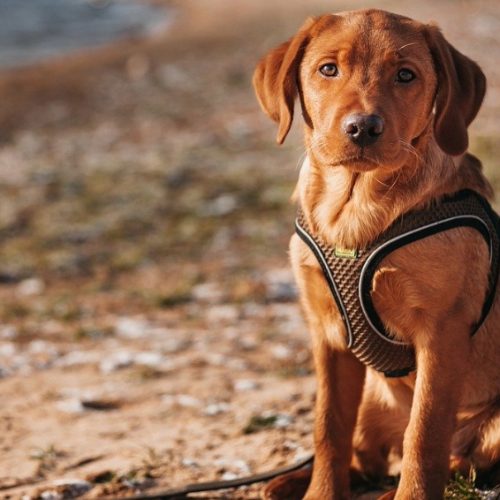Silver Labradors, also known as dilute chocolate Labradors, have become increasingly popular over the past couple of decades. Their striking silver or gray coat color is due to a dilution gene that causes their chocolate brown coats to appear lighter. Breeding silver Lab puppies can be rewarding but does come with some specific considerations compared to other Lab colors. In this post we talk about How to Successfully Breed Silver Labs.
Choose Reputable Foundation Stock
As with any dog breeding program, starting with dogs from health-tested, reputable lines is key. There are unfortunately some disreputable breeders specifically breeding silver Labs and claiming they are rare or worth higher prices. Avoid these operations and look for breeders doing all recommended OFA and CERF health testing on their breeding dogs. The Labrador Retriever Club provides more guidance on identifying responsible breeders.
It’s also best to start with chocolate factored Labradors that carry recessive dilute genes rather than buying dilute or silver Labradors of unknown background. Breeding double dilute dogs comes with some health risks to the puppies. Work with a mentor or experienced breeder when first breeding silver Labs.
Perform All Recommended Health Testing
All breeding Labs should undergo testing by OFA or PennHIP for hip dysplasia, OFA elbow dysplasia testing, OFA eye exams by a veterinary ophthalmologist, and DNA testing for conditions like PRA progressive retinal atrophy and EIC exercise-induced collapse. These issues can impact any Labradors, including silver Labs.
Additionally, some studies have found a higher incidence of skin problems in dilute colored dogs. Breeding stock should be checked thoroughly for skin abnormalities before breeding. Autoimmune disorders may also be more common with the dilute gene, so take extra care that breeding dogs are healthy.
Plan Quality Pairings
Once suitable foundation stock is selected, the next step is choosing a quality pairing. Both parents should complement each other and have sound structure and temperaments, along with good health test results.
If wanting to produce silver Lab puppies, one parent must carry two copies of the dilute gene while the other must carry at least one copy. DNA color testing is available to determine dilute gene status. Pairs should be selected to avoid the health problems associated with double dilute puppies.
An experienced mentor can provide immense help guiding beginners on ideal pairings. Never just breed a male and female together because they are available or the same color. Put thought into how their strengths and weaknesses blend.
Provide Excellent Whelping & Puppy Care
Ensuring the pregnant dam and eventual puppies receive proper care is another key to successful silver Labrador breeding. Provide high quality nutrition and appropriate exercise to the dam before and after whelping. Prepare an appropriate whelping area based on the season.
Once puppies are born each should be thoroughly checked for birth defects and health problems. Then supply abundant colostrum, milk, warmth, and care including regular veterinary checkups for the first 8 weeks after birth. Temperament testing and socialization are also vital to developing healthy, well-adjusted Lab puppies. Dilute Labs may need extra skin condition monitoring.
Screen Potential Silver Labrador Retriever Buyers
All quality breeders should have a thorough screening process for puppy buyers well before letting any dogs go to new homes. This ensures they are prepared for a Lab and aware of the breed’s exercise, training, and care needs.
Silver Lab breeders need to educate buyers even further. Explain why dilute Labs may have special health or grooming considerations compared to black, yellow, or chocolate Labs. Screen for people only interested based on the unique color rather than total Lab temperament.
Breeders should also obtain written contracts ensuring puppies will be returned to them if the buyers ever unable to care for them rather than taking them to shelters. Also requiring AKC limited registration helps prevent indiscriminate breeding of your carefully bred bloodlines.
Invest Back Into Preservation Breeding
No breeder will get everything right, even after decades of experience. Producing ideal silver Labradors is an ongoing learning process. Every litter should provide some insights to refine a breeding program – whether that’s a great puppy to consider retaining for future breeding or one that indicates an adjustment is needed in a pairing.
Breeding quality silver Labs also requires dedication to the Labrador breed as a whole. Ethical breeders put profit secondary and invest back into health testing, showing, field trials, and other activities that support and preserve Labrador Retrievers. They work to educate buyers and give back to rescue when possible. Through such efforts, reputable breeders can continue perfecting and protecting the silver Labradors so many have come to admire.
Conclusion
Breeding silver Labrador Retrievers carries great responsibility to the dogs, buyers, and breed overall. By starting with health tested stock, performing thoughtful pairings, providing excellent pregnancy and puppy rearing care, thoroughly screening buyers, and continuously working to improve litters, breeders can make progress breeding healthy, sound, dilute Labs. There are still knowledge gaps around the genetics and specialized care of silver Labs. Through open sharing of information and collaboration with other responsible Lab breeders, those dedicated to this variant color can ensure ethical, preservation breeding of silver Labs going forward. I hope this How to Successfully Breed Silver Labs post helps you.









